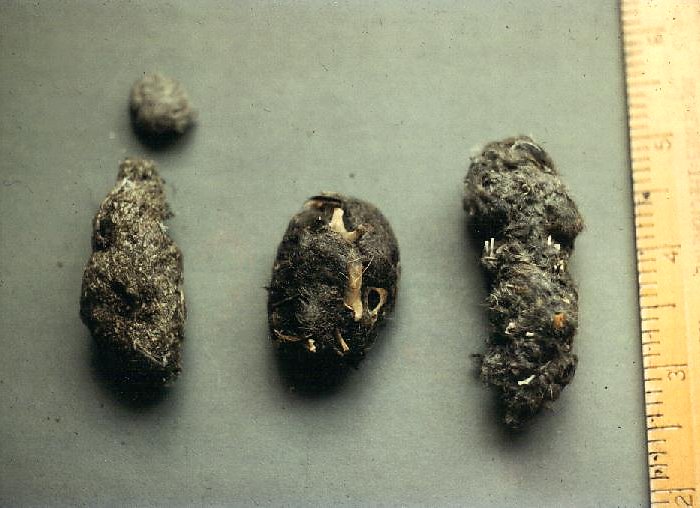What Animal Leaves The Intestines Behind On Their Prey
Digestion in Owls
Past Deane Lewis
Similar other birds, Owls cannot chew their food - small prey items are swallowed whole, while larger prey are torn into smaller pieces before beingness swallowed. Some Owl species volition partially pluck bird and larger mammal casualty.
Dissimilar other birds, Owls have no Ingather. A ingather is a loose sac in the throat that serves as storage for food for after consumption. Since an Owl lacks this, food is passed straight into their digestive system.
Now, a bird's stomach has ii parts:
The get-go function is the glandular tummy or proventriculus, which produces enzymes, acids, and mucus that begin the procedure of digestion.
The 2d part is the muscular tum, called the Ventriculus, or gizzard. In that location are no digestive glands in the gizzard, and in birds of prey, information technology serves every bit a filter, holding dorsum insoluble items such as bones, fur, teeth and feathers (more than about this beneath).
The soluble, or soft parts of the food are ground past muscular contractions, and allowed to pass through to the residuum of the digestive system, which includes the pocket-size and large intestine. The liver and pancreas secrete digestive enzymes into the small intestine where the food is absorbed into body. At the end of the digestive tract (after the large intestine) is the cloaca, a holding area for wastes and products from the digestive and urinary systems. The cloaca opens to the outside past means of the vent. Itis interesting to annotation that birds (apart from the Ostrich) do not take a bladder. The excretion from the vent is largely fabricated up of an acrid which is the white role of a healthy dropping.
Several hours after eating, the indigestible parts (fur, bones, teeth & feathers that are still in the gizzard) are compressed into a pellet the same shape as the gizzard. This pellet travels up from the gizzard back to the proventriculus. Information technology will remain there for upwardly to x hours before existence regurgitated. Considering the stored pellet partially blocks the Owl'southward digestive system, new prey cannot be swallowed until the pellet is ejected. Regurgitation often signifies that an Owl is set to eat again. When the Owl eats more than ane prey detail within several hours, the diverse remains are consolidated into one pellet.
The pellet cycle is regular, regurgitating the remains when the digestive system has finished extracting the diet from the food. This is often washed at a favourite roost. When an Owl is nigh to produce a pellet, it volition take on a pained expression - the eyes are closed, the facial disc narrow, and the bird will be reluctant to wing. At the moment of expulsion, the cervix is stretched upwards and forward, the beak is opened, and the pellet only drops out without whatsoever retching or spitting movements.
Owl pellets differ from other birds of prey in that they contain a greater proportion of nutrient residue. This is considering an Owl's digestive juices are less acidic than in other birds of prey. Likewise, other raptors tend to pluck their casualty to a much larger extent than Owls.

Owl Pellets: Top left: Little Owl (Athene noctua), Bottom left: Tawny Owl (Strix aluco), Middle: Barn Owl (Tyto alba), Right: Short-Eared Owl (Asio flammeus). Photo © Alan Sieradzki
References:
Campbell, Wayne. 1994. "Know Your Owls". Axia Wildlife.
Page updated 2015-06-19
Source: https://www.owlpages.com/owls/articles.php?a=4
Posted by: bruggemaninden1957.blogspot.com

0 Response to "What Animal Leaves The Intestines Behind On Their Prey"
Post a Comment